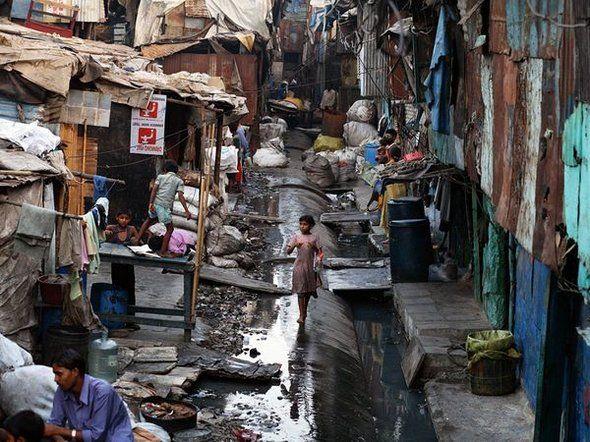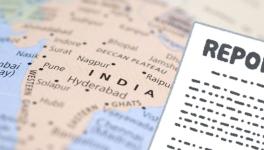India Drops to 131 Among 189 Countries in UN’s Human Development Index

Representational image. | Image Courtesy: Pinterest
India dropped one spot to 131 among 189 countries in the 2020 human development index, according to a report released by the United Nations Development Programme (UNDP) on Tuesday.
The Human Development Index (HDI) is a measure of a country's health, education, and standard of living. Norway topped the index, followed by Ireland, Switzerland, Hong Kong and Iceland, the report showed.
India's HDI value for 2019 was 0.645, which put it in the medium human development category. The country was positioned at 131 among 189 countries and territories, according to the report. India had ranked 130 in the index in 2018.
According to a LiveMint report, Singapore (11), Saudi Arabia (40) and Malaysia (62) performed the best among the Asian countries and were deemed to have “very high human development”. Sri Lanka (72), Thailand (79), China (85), Indonesia and the Philippines (both 107), and Vietnam (117) were classified as “high human development" countries.
India, Bhutan (129), Bangladesh (133), Nepal (142), and Pakistan (154) were ranked among countries with medium human development, the report said.
Life expectancy of Indians at birth was 69.7 years in 2019, while Bangladesh has a life expectancy of 72.6 years and Pakistan 67.3 years, the 2020 Human Development Report said.
According to the report published by the United Nations Development Programme on Tuesday, India's gross national income per capita fell to USD 6,681 in 2019 from USD 6,829 in 2018 on purchasing power parity (PPP) basis.
Purchasing power parity or PPP is a measurement of prices in different countries, which uses the prices of specific goods to compare the absolute purchasing power of the countries’ currencies.
As per the Mint report, among the BRICS countries, Russia (52), Brazil (84) and China (85) were ranked ahead of India. “India’s HDI value for 2019 is 0.645, which put the country in the medium human development category, positioning it at 131 out of 189 countries and territories. Between 1990 and 2019, India’s HDI value increased from 0.429 to 0.645, an increase of 50.3%,” the UNDP report said.
“HDI is a summary measure for assessing long-term progress in three basic dimensions of human development: a long and healthy life, access to knowledge, and a decent standard of living...Between 1990 and 2019, India’s life expectancy at birth increased by 11.8 years, mean years of schooling increased by 3.5 years, and expected years of schooling increased by 4.5 years. India’s GNI per capita increased by about 273.9% between 1990 and 2019,” it reportedly added.
“The most recent survey data publicly available for India’s MPI (Multidimensional Poverty Index) estimation refer to 2015-2016. In India, 27.9% of the population (377,492 thousand people) are multi-dimensionally poor, while an additional 19.3% are classified under vulnerable to multidimensional poverty (260,596 thousand people),” the UNDP report said.
The report said evidence from Colombia to India indicates that financial security and ownership of land improve women’s security and reduces the risk of gender-based violence, clearly indicating that owning land can empower women.
It further said indigenous children in “Cambodia, India and Thailand show more malnutrition-related issues such as stunting and wasting.”
“In India different responses in parent behaviour as well as some disinvestment in girls' health and education have led to higher malnutrition among girls than among boys as a consequence of shocks likely linked to climate change,” the report said.
Talking to reporters, UNDP Resident Representative Shoko Noda said the drop in India's ranking doesn't mean “India didn't do well but other countries did better”. Noda said India could help other countries too and lauded its commitment to reduce carbon emissions.
The report said that under the Paris Agreement, India pledged to reduce the emission intensity of its GDP from the 2005 level by between 33% to 35% by 2030 and to obtain 40% of electric power capacity from non–fossil fuel sources by 2030.
“As part of the plan, the National Solar Mission aims to promote solar energy for power generation and other uses to make solar energy competitive with fossil fuel–based options. Solar capacity in India increased from 2.6 gigawatts in March 2014 to 30 gigawatts in July 2019, achieving its target of 20 gigawatts four years ahead of schedule. In 2019, India ranked fifth for installed solar capacity,” the report said.
With inputs from PTI
Get the latest reports & analysis with people's perspective on Protests, movements & deep analytical videos, discussions of the current affairs in your Telegram app. Subscribe to NewsClick's Telegram channel & get Real-Time updates on stories, as they get published on our website.
























